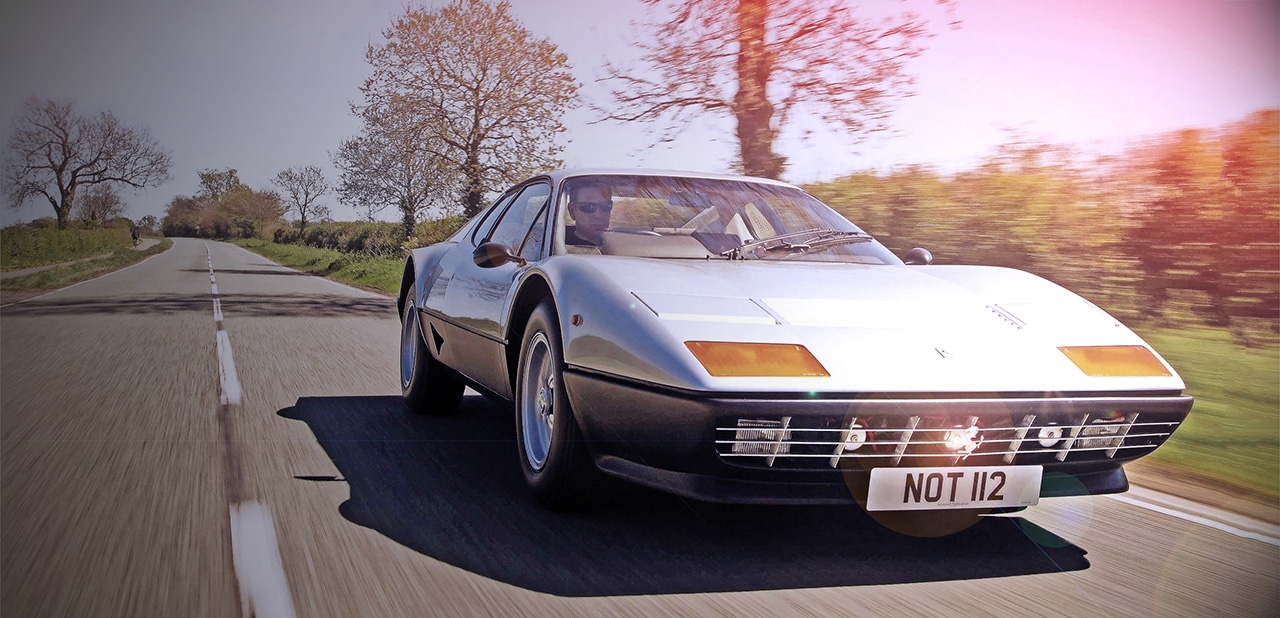
The List: a reader gets to drive this Ferrari 512 BB. It feels as though there’s nothing it couldn’t overtake. Cop Stuart McNaughton fell in love with the 512 BB as a boy. Will he find it arresting to drive when we give him the chance? Words Sam Dawson. Photography Simon Thompson.
My obsession with the Berlinetta Boxer began in 1982,’ says Metropolitan Police Detective Sergeant Stuart McNaughton as he paces around Pininfarina’s silver sculpture down a quiet Oakham backstreet, occasionally crouching to take in a different perspective or catch a glimpse of its red interior.
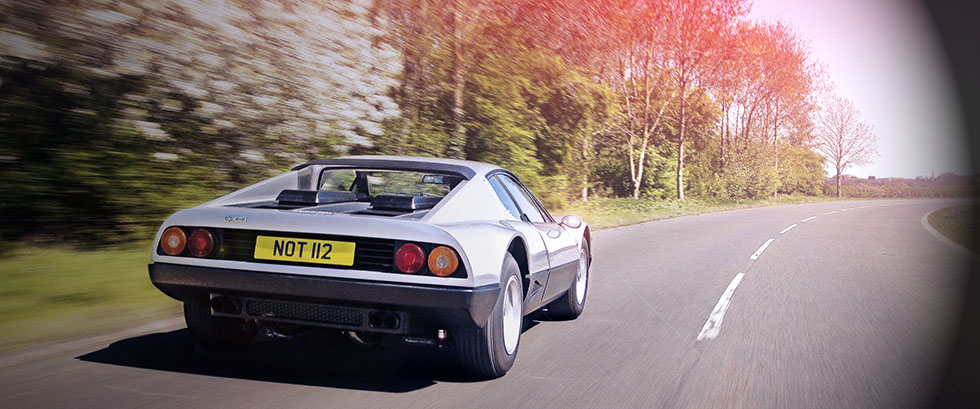
‘Back when I lived in Dundee my uncle had an E21 BMW 323i, and the only place he could get it serviced dealt with all sorts of specialist cars. I went with him to collect it once, and saw a red Ferrari 512 BB in the workshop. It was the first Ferrari I’d seen of any sort – they weren’t common in Scotland in the Eighties – and I’ve wanted to know what they’re like to drive ever since. Finally, thanks to Drive-My, I’m going to find out – and it looks fantastic in this colour!’ Nürburgring Silver is an unusual colour for a Ferrari, but I’m glad the first owner was a maverick. It looks prototypic, like unpainted aluminium fresh from the Scaglietti body-buck.
Stuart settles into the driver’s seat, rubbing his hands with glee, momentarily transported back to 1982, before turning the ignition key and tapping the accelerator. ‘Listen to that!’ he exclaims as the flat-12 behind him cackles and spits. ‘It’d sound wonderful anyway, but those carburettors make it perfect – it’s a less “efficient” sound than you’d get with fuel injection but it’s all the better for it – all those stray pops and bangs make it sound alive!
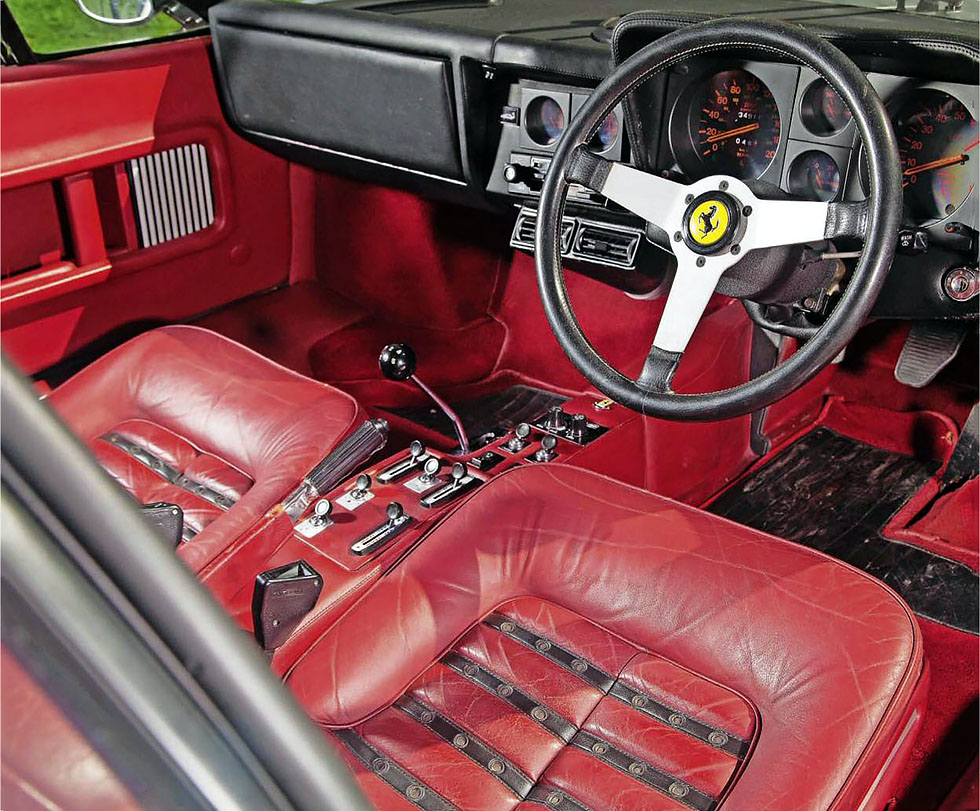
‘It’s comfortable as well – at least it feels so at the moment, I imagine it might get quite hot in here – but I’d better not get too cosy and miss a gear because that’s one high-revving engine.’ We set off in the direction of Rutland Water in search of some quiet A-roads with space to exercise the 512 BB properly. ‘I’m just getting the feel of the pedals,’ says Stuart. ‘The throttle is tricky at first – it’s clearly an old car with a stiffly sprung cable mechanism, but after a mile or so your feet start to get used to it and you can concentrate on making progress. I’m surprised how slow the steering is, though – it’s not just the lack of power assistance, but it’s a lot of turns lock-to-lock for a sports car – more than three.’
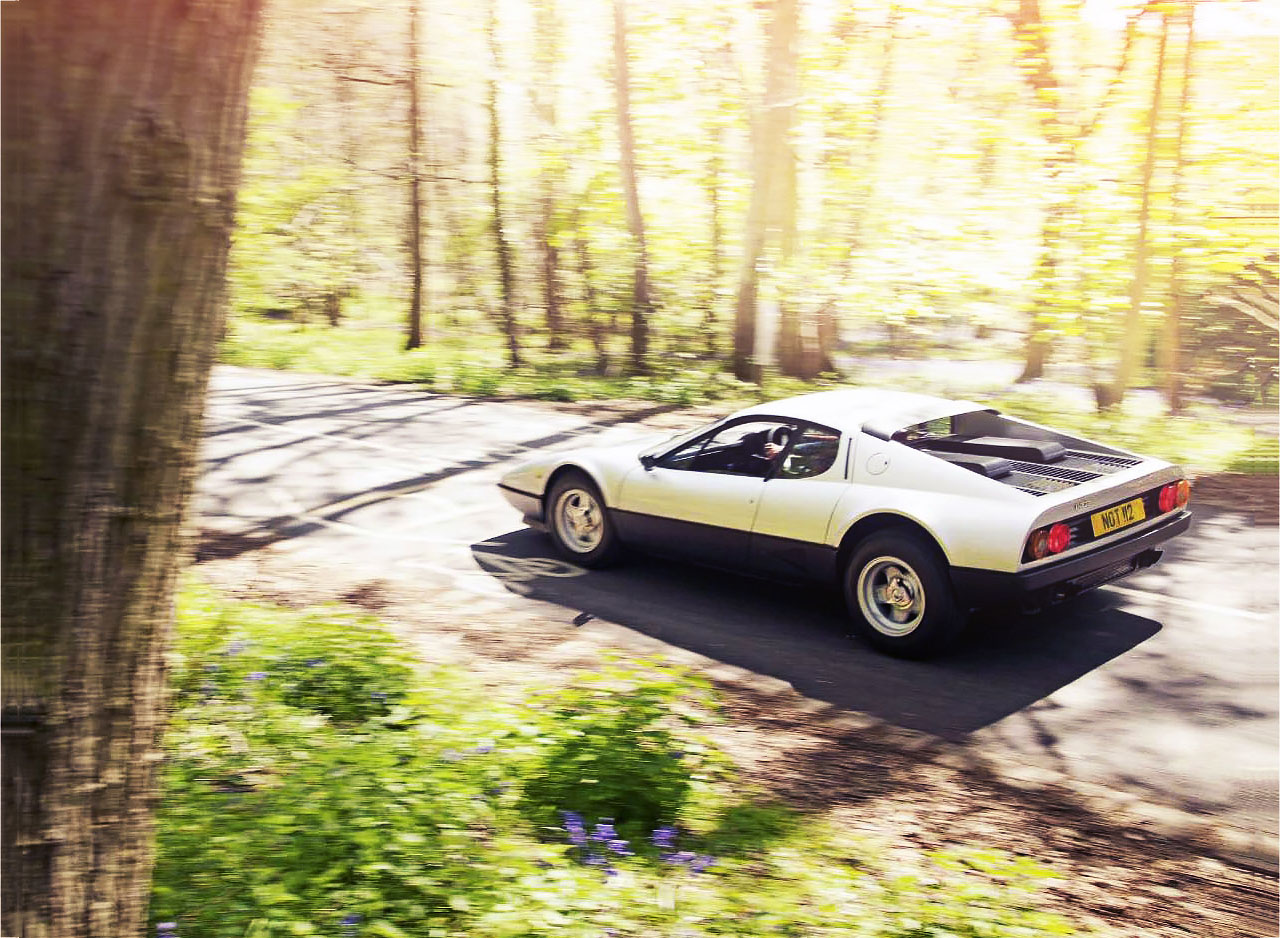
As the roads open out Stuart’s police driver training comes into play. He positions the car close to the centre line of the road to maximise his sighting lines, cruising with the gearbox in third for greater throttle responsiveness. We’re coming up behind a trio of timidly-driven superminis. Stuart waits for the road to straighten out and, with a quick blind-spot check and a flex of the accelerator, overtakes all three vehicles in one decisive move. The flat-12 cacophany behind us soars into the realms of Seventies Formula One – a serrated 5000rpm yowl, a lung-inverting hard-rock scream underpinned by a savage ignition bassline.
‘You’re going to laugh at me for saying this, but it reminds me of my Dad’s old Ford Sierra XR4x4,’ says Stuart. ‘I don’t mean in terms of the way it looks and sounds, but rather the feeling it gives you as a driver – a sense that there’s nothing driving-wise that it won’t do. Back in the Eighties, it felt as though you could overtake anything in an XR4x4. No overtaking manoeuvre was too much for it to handle. I’m getting that same sense from the Ferrari. What helps is how small it seems – it’s not a wide car, it feels funnelled and compact. You can position the BB like a small sports car.’
I’m also looking forward to my spell behind the wheel – for two reasons. Firstly, in my opinion the Berlinetta Boxer is the bestlooking road car ever to wear the prancing horse, Pininfarina’s purest mid-engined shape of all; and secondly because of all the cars I’ve driven over the years, I’ve found the BB’s successor, the Testarossa, the most emotionally satisfying of the lot. And yet there are motoring journalists, racing drivers and aesthetes who’ll stake their reputations on telling everyone how dreadful it is.
The first characteristic I notice is how severely reclined the driving position is. At first it seems irritating and claustrophobic – if I attempt to sit upright I’ll headbutt the sun visor – but it is comfortable and the combination of extreme seat rake and silver metalwork puts me in mind of a NASA Mercury space capsule. When I turn the key, hear that Lauda-era F1 snarl and find the short-travel ball-topped gearlever with its semi-exposed mechanism nestling beneath my left hand, I realise exactly what Ferrari’s team did when they designed this car – the seating position, ergonomics designed around economy of movement and that horizontally opposed 180-degree flat-12 keeping weight low in the chassis are all characteristics of Mauro Forghieri’s 312T that ran concurrent with the BB’s development, winning four F1 Constructor’s titles in the process.
It certainly takes off like one, catapulting itself to 60mph in a raging, bellowing 5.4 seconds. The sensation of speed is accentuated by the inward sweep of its front wings, which arch upwards to accommodate the front wheels while keeping the car as low as possible, and reflect passing roadside trees in the sections just ahead of the windscreen with a strobe-like blur. While it’s true that the steering is long-winded compared to some rivals, its three turns lock-to-lock reduce twitchy nervousness, which helps make the BB easy to handle. The pressure needed to push the throttle pedal helps me to control the colossal power reserves, and with so much responsibility I feel more comfortable having to commit to a corner with a deliberate armful of lock than an accidental wrist-flick.
Before long, on the winding sweepers heading towards Rutland Water’s north shore, I feel like a racing driver. The steering works with me, not only providing enough leeway to meter my cornering actions, but also transmitting every last road surface ripple into my fingertips, and once the gearbox is warm the shift action is joyous, a quick whip across the gate, the change snatched in the manner of Gilles Villeneuve in the midst of an outbraking manoeuvre. But while steering wheel and gear lever buzz like live electric cables, the BB’s ride is completely unruffled. Stiff springs and anti-roll bars can mean a harsh ride, but here it’s lessened by softly sprung leather seats, progressive spring rates and high-sidewall 215/70 VR15 tyres that absorb the cornering forces while that suspension keeps the body level. Stuart’s right – despite being 36 years old it feels as though there’s little this car couldn’t overtake, and few hairpin bends it couldn’t convincingly dash round either.
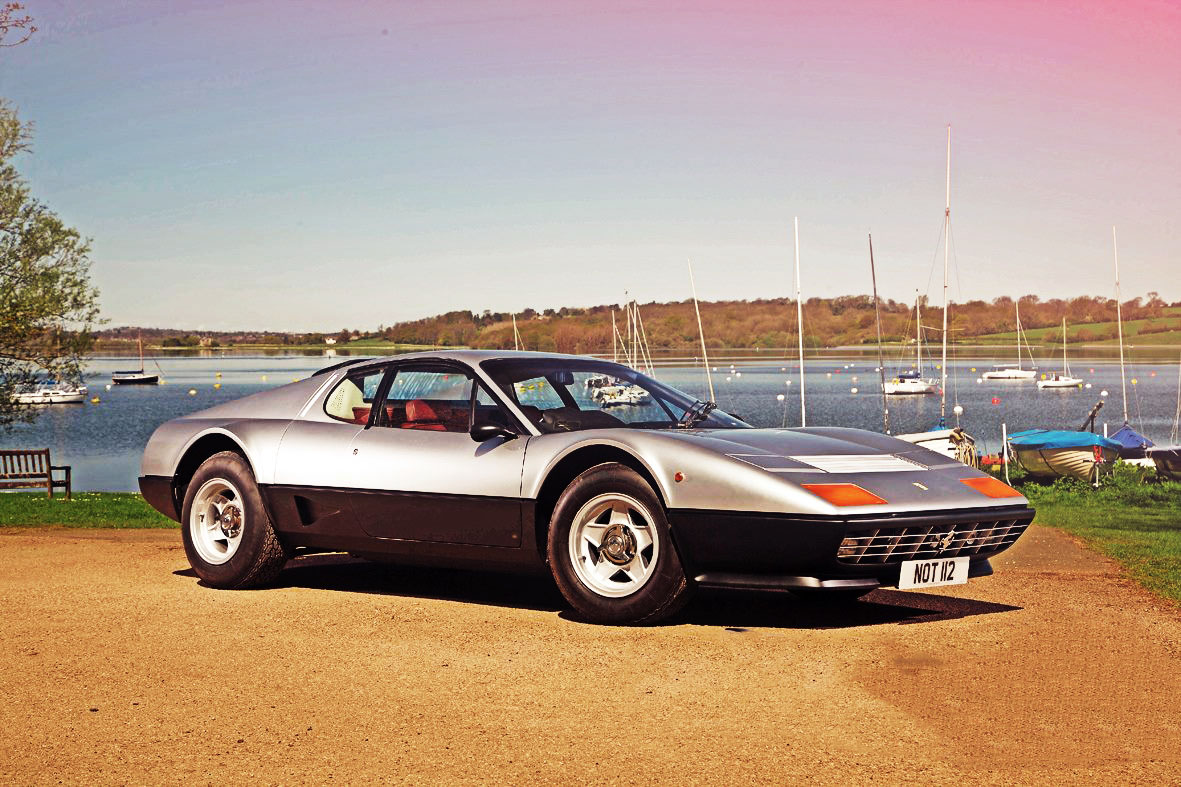
But is it better than the Testarossa? Yes – the Testarossa surprises by being more tactile than you might expect, and by its ability to harness its power with masses of rear-end grip. However, the BB manages to balance, acrobat-like, between ultimate feedback and total control in a way that makes the Testarossa feel slightly dulled and synthetic. This, coupled with the styling, means I’ve found my new favourite car. There was never any doubt for Stuart. ‘I thought it would be a real handful, but it’s actually an easy car to get to know, helped by all the feedback it gives you, especially through the steering wheel. It’s so tractable too – when I first got in it I was scared to work the engine, but now I know in fourth gear I can cruise at 30 and overtake three cars at once. It lulls you into driving gently, then you catch a glimpse of that badge on the steering wheel, and feel obliged to drop a gear and go for it. I’ve met a hero, and it surprised me by being fantastic.’
Thanks to: Graypaul Nottingham, where the car is for sale (sytner.co.uk/ferrari/ graypaul-nottingham); Rutland Sailing Club (rutlandsc.co.uk)
| Car | Ferrari 512 BB |
| Made in | Italy |
| Sold | 1973-1984 |
| Number built | 2,323 |
| Construction | Steel monocoque |
| Engine | 4943cc horizontally-opposed12-cylinder, dohc, four Weber 40IF3C carburettors |
| Max power (DIN) | 360bhp @6800rpm |
| Max torque (DIN) | 333lb ft @ 4600rpm |
| Transmission | Five-speed manual, RWD |
| Suspension | Front and rear: independent, double wishbones, coil springs, telescopic dampers, anti-roll bar |
| Steering | Rack and pinion |
| Wheels | |
| Brakes | Vented discs, with servo |
| Measurements | |
| Length | 4,400 mm (173.2 in) |
| Width | 1,830 mm (72.0 in) |
| Height | 1,120 mm (44.1 in) |
| Wheelbase | 2,500 mm (98.4 in) |
| Weight | 1515kg |
| Power to weight | |
| 0-62mph | 5.4 secs |
| Top speed | 180mph |
| Mpg | 17 |
| Price new | £33,012 |
| Price now | £100k-£200k |
WANT A DRIVE ? CONVINCINGIL COMMENDATORE THE LIST FERRARI 512BB
Classic Cars will make a dream drive happen for one reader in every issue. All you need to do to be in the reckoning is to send us your list of the ten cars you’d most want to drive, along with a CV of the classic cars you’ve owned to. You’ll need to be prepared for the possibility of long-distance travel and an early-morning start, but you will enjoy an unforgettable experience.
Ferrari’s silver bullet was right on target for Stuart.
ENZO’S REARGUARD ACTION
Enzo Ferrari didn’t like the idea, but in the end the combined forces of F1 design, his engineers and Lamborghini gave birth to the BB.
‘The ox pulls the cart’ was Enzo Ferrari’s regular riposte whenever Gioacchino Columbo suggested the idea of a mid-engined car to him. Even though Ferrari accepted the mid-engined imperative in motor sport by 1962, as evidenced by the success of the V6-engined Tipo 156 ‘sharknose’ F1 car and the 250P sports-racer, he was reluctant to turn the idea into a road car, believing that no road car’s suspension could cope with such substantial rearward weight distribution.
But Ferrari accepted that to homologate the Dino V6 engine for lower-formulae ‘stockblock’ racing, it would need building in volume, and that meant a Porsche 911 rival. Six different Pininfarina prototype designs crossed his desk before he gave his blessing to one, and the packaging of the engine created further bother. Early prototypes placed it longitudinally, ideal in terms of handling balance, but it obliterated the boot space; unacceptable in a supposedly practical Porsche rival.
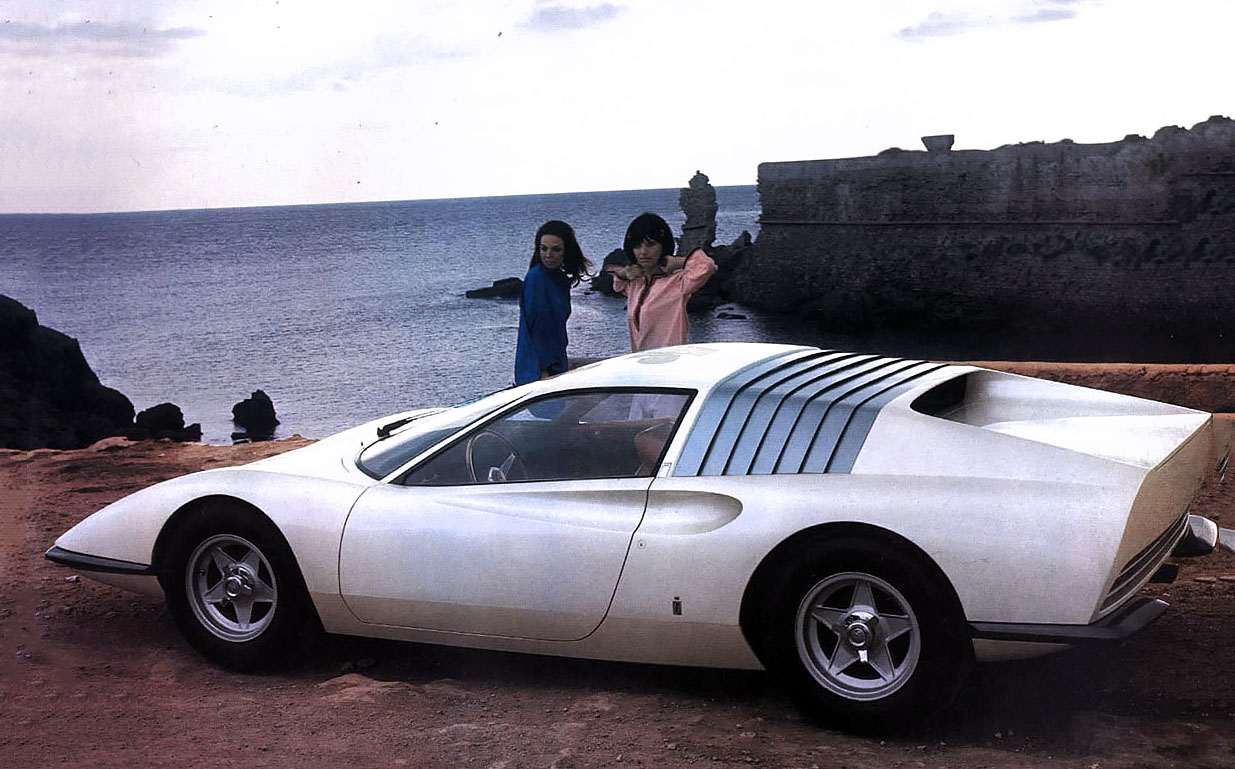
The 1968 Pininfarina P6 prototype was a glimpse of the future – its influence on the BB is clear.
And then there was the name. Enzo was insistent that only V12 cars should wear the Ferrari badge on the road, a point he underlined in the Dino’s brochure when he described it as ‘almost a Ferrari’. Public pressure reached boiling point in 1966. Amid furious on-track battles between the Ferrari 330 P3 and the Ford GT40, the world awaited a mid-engined V12 monocoque Ferrari road car in vain. To complicate matters further, Lamborghini stunned the world by releasing the Miura. Pininfarina released the 365P Berlinetta Speciale concept featuring a monocoque, P3-derived brakes and suspension, a mid-mounted V12 and a radical three-seat layout. Enzo vetoe’d the idea, and commissioned the old-fashioned 365 GTB/4 instead.
Stylist Leonardo Fioravanti joined the calls for a mid-engined 12-cylinder Ferrari road car in 1968 with his radical Pininfarina P6 prototype. It’s in this car that the familiar Berlinetta Boxer styling cues, including the large square lamps, curving bonnet and hunched roofline originate. The P6 became a major draw at 1968 motor shows. This time, with Lamborghini eating into Ferrari sales, Enzo was much more favourable. But it was Fiat that cast the deciding vote that led to the BB’s creation. Instrumental in the production of Dino engines, the Fiat board took a 50 per cent controlling stake of Ferrari shares in 1969, also taking charge of road car production.
‘He believed no road car could cope with such substantial rearward weight distribution’
‘I’d better not get too cosy and miss a gear; that’s one high-revving engine’
THE EVOLUTION
1973-1976 365 GT/4 BB
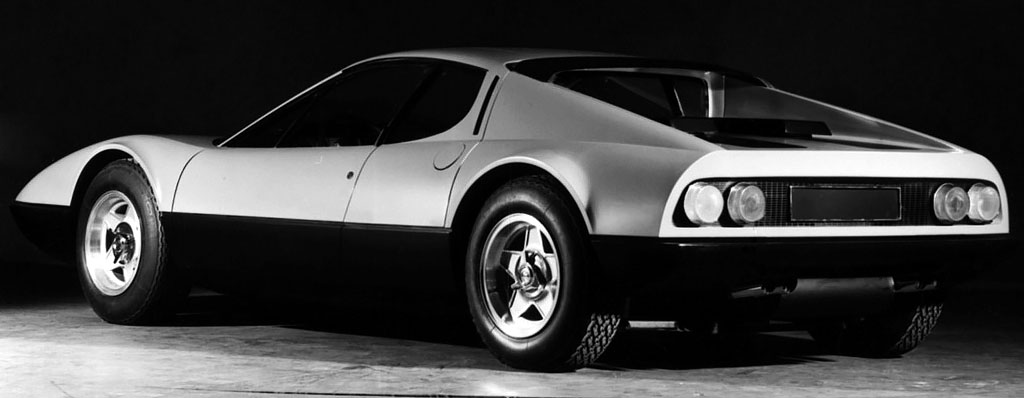
Ferrari 365 GT4 Berlinetta Boxer Prototipo 1971
Maranello’s long-awaited midengined riposte to the Lamborghini Miura was presented in 1973, although it was very similar in appearance to the Pininfarina P6 Berlinetta Speciale concept of 1968. Its new flat-12 engine has the same designation and internal dimensions as its predecessor 365 GTB/4 ’s V12, but is ‘flattened’ into a 180-degree ‘V’ to keep the weight low in the chassis.
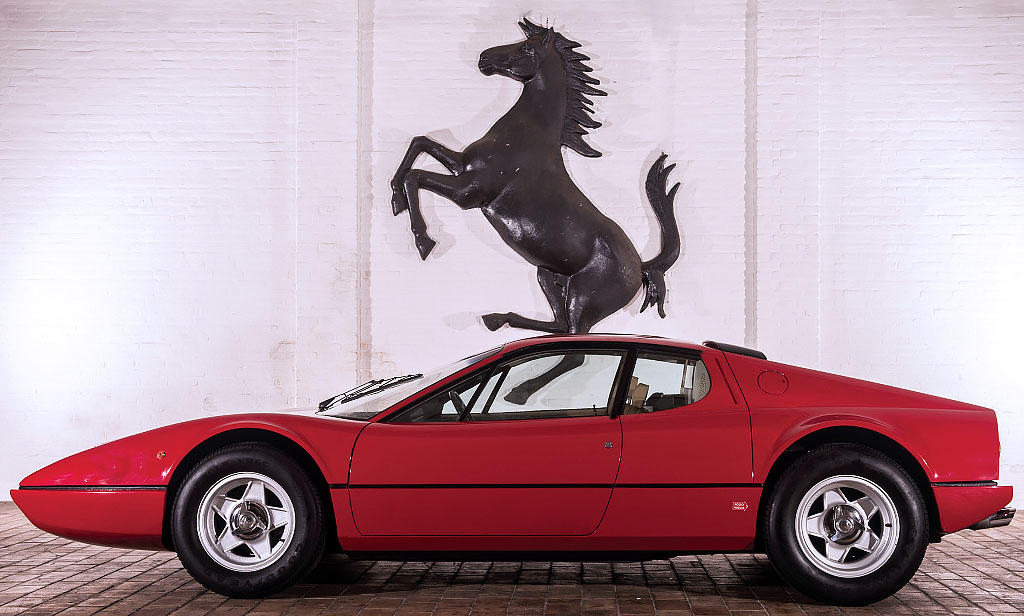
Ferrari 365 GT4 Berlinetta Boxer UK-spec 1973-1976
Despite the ‘Berlinetta Boxer’ name, opposing pistons share common crankpins, so it’s not actually a boxer.
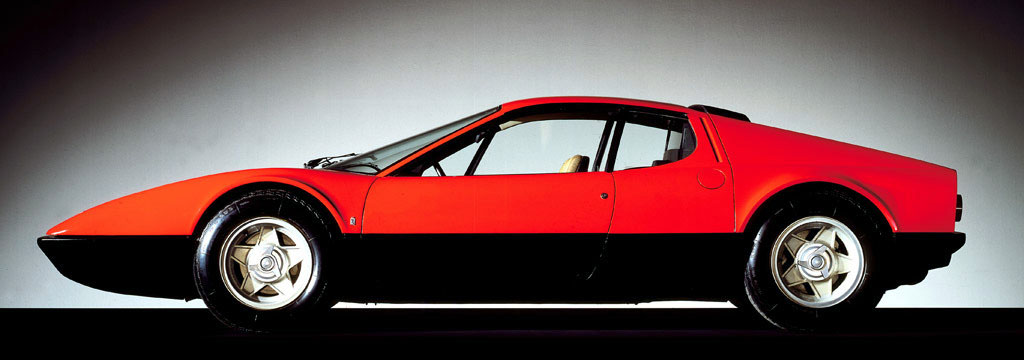
Ferrari 365 GT4 Berlinetta Boxer Prototipo 1971
1976-1981 512 BB
The increase from 4.4 to 4.9 litres was made in the name of driveability rather than power, increasing lowrpm torque rather than power. Detail changes represented systematic design-fault solving on Ferrari’s part – NACA (National Advisory Committee for Aeronautics) ducts cooled the extravagant exhaust system, a front lip spoiler prevented high-speed front-end wander, and the six taillights were replaced with four larger ones in keeping with the rest of the Ferrari range.
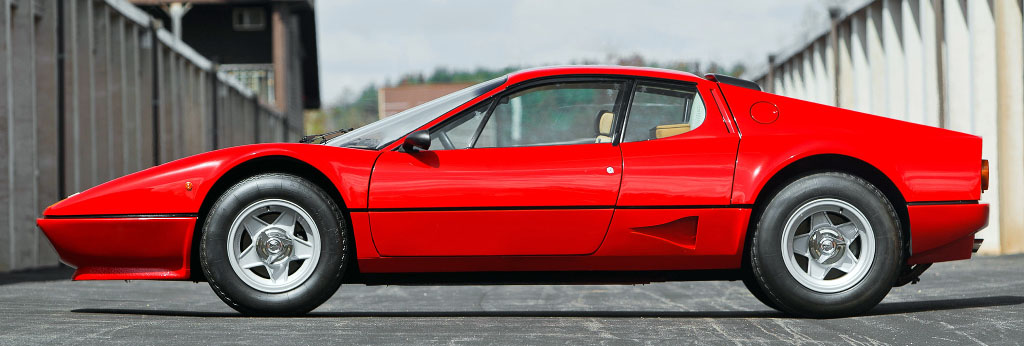
1976 Ferrari 512 Berlinetta Boxer
1978-1981 512 BB LM
Inspired by Luigi Chinetti’s creation of a NART racing Ferrari 365 BB in 1974, Ferrari created a 440bhp lightweight racing version of the car for customers.
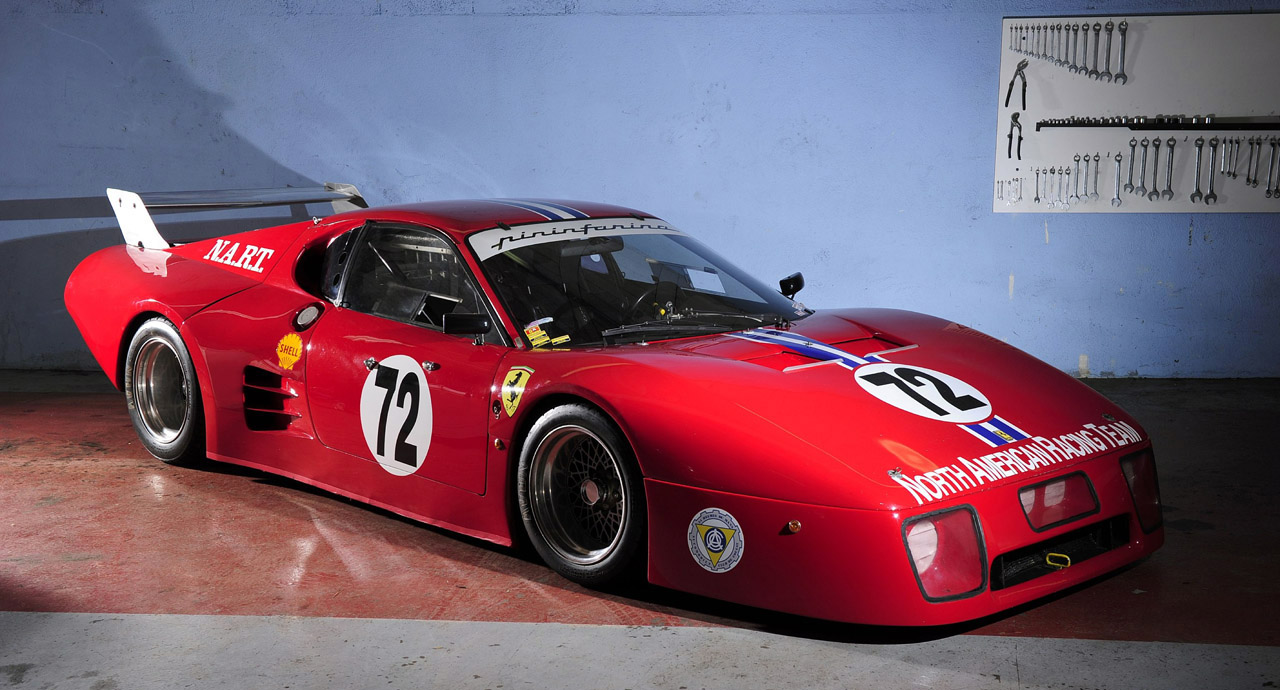
1978 NART / Ferrari 512 BB LM
Ferrari offered works backing, but raced no cars officially. The multi-carburettor set-up proved unreliable in endurance racing, but after the adoption of fuel injection for the 1979 season the cars began to improve. The ultimate culmination of these tweaks was a GT class win plus fifth place overall at the 1981 Le Mans 24 Hours.
1981-1984 512i BB
Regularly balancing all those Weber carburettors made for an ownership headache – 365s and 512s can drift off-tune in the course of a single long journey – so the arrival of Bosch K-Jetronic fuel injection in 1981 made the BB much easier to live with, even if it did knock 20bhp off the carburettor 512’s 360bhp.

Ferrari 512 BBi con l’opzione “Bicolore” ‘1981-1984
Further minor detail changes mark out a Ferrari 512i BB – the front grille was restyled to house new foglights, and the car now rode on metric-sized Michelin TRX tyres.
Stuart found the 512 BB’s abilities surprisingly accessible thanks to informative controls. Four Weber carburettors feed this flat-12 masterpiece in a banquet of soaring revs. A 512 BB was the first Ferrari Stuart saw in the flesh – 33 years later he’s dazzled by its ability.
Stuart McNaughton – Police officer Stuart loves Alfa Romeos, but he’s also had an Alpine GTA. When he started a family, police experience led to a string of fast estates such as Volvo 850 T5-Rs. He now has a Subaru Legacy.
BMW 3.0 CSL
Jensen Interceptor
Ferrari 328 GTS
Porsche 930 Turbo
Jaguar E-type V12
Lotus Esprit Turbo
Aston Martin DB5
Aston Martin V8 Vantage
Lamborghini Miura
Ferrari 512 BB





